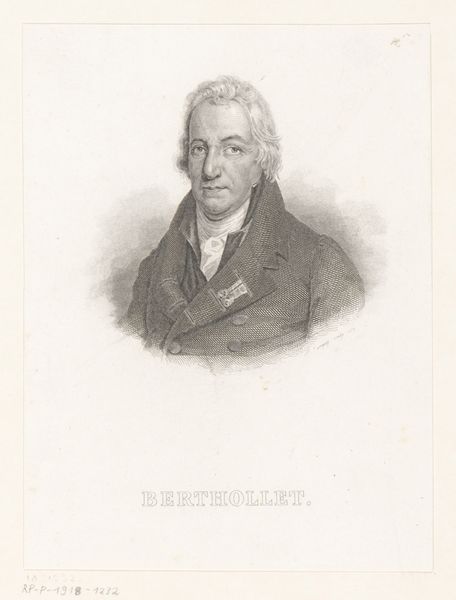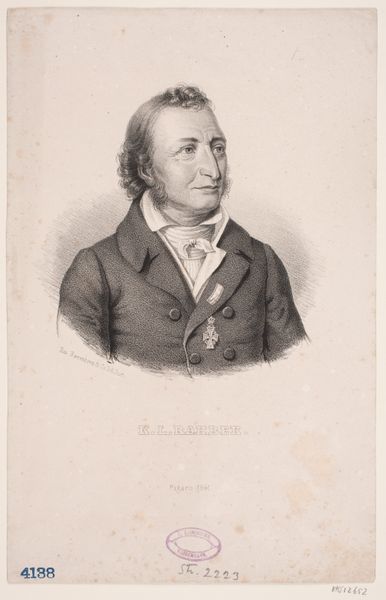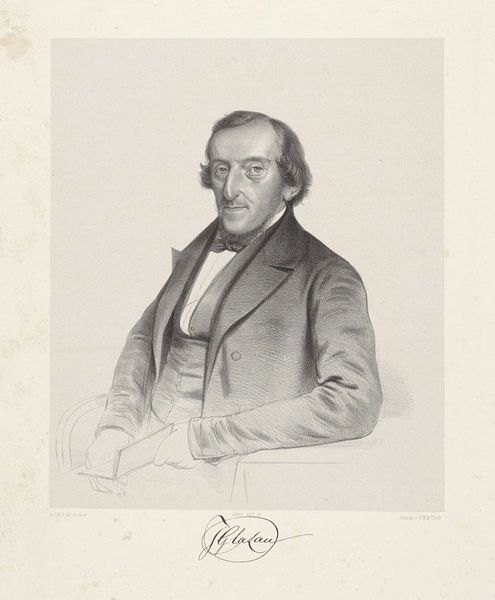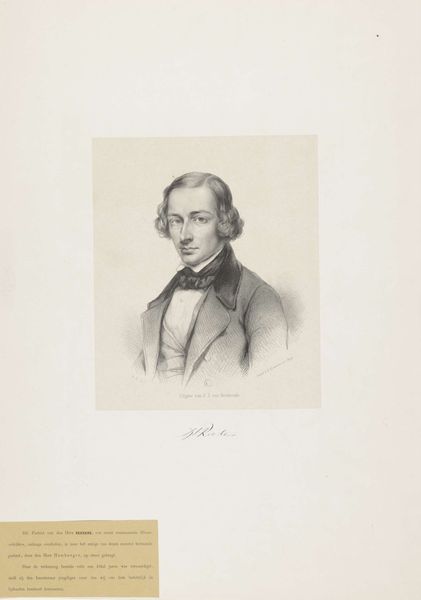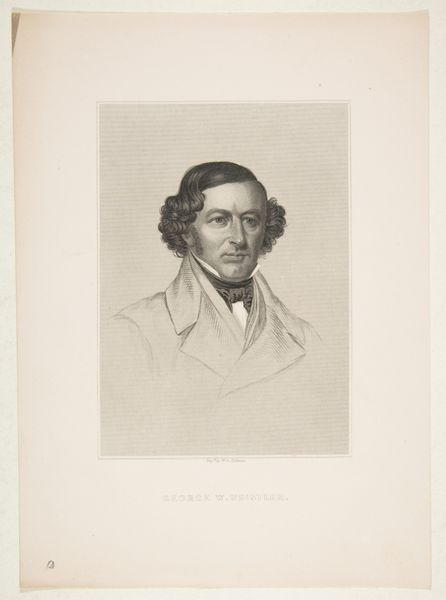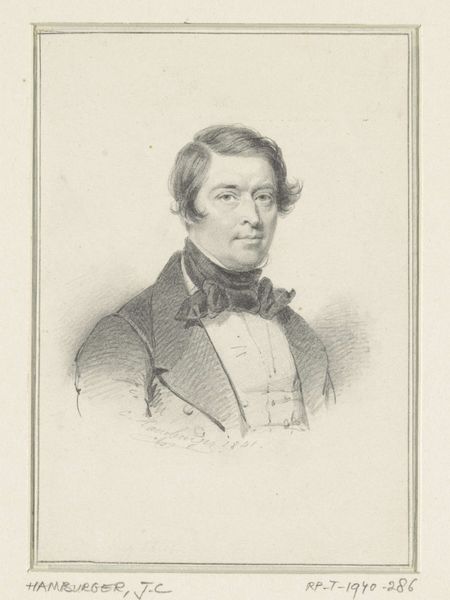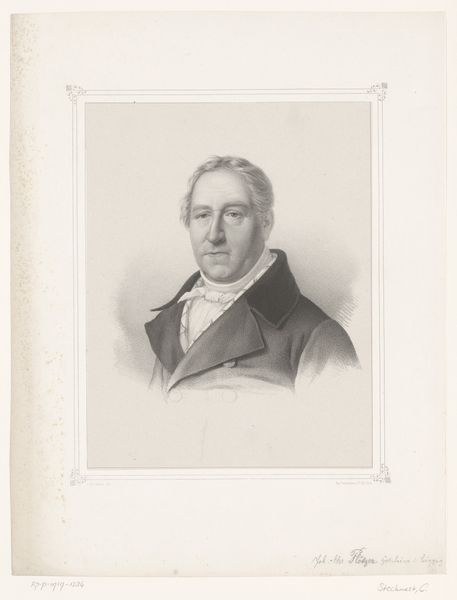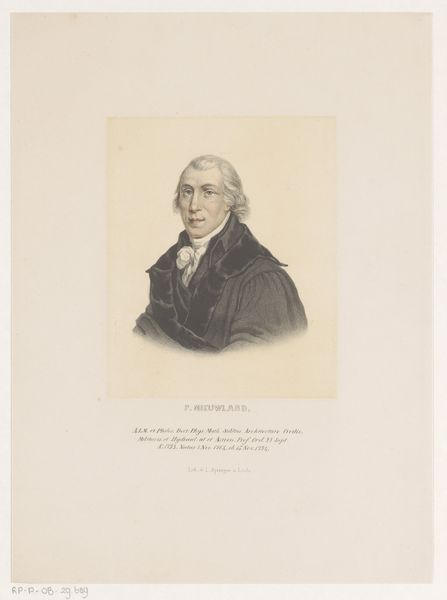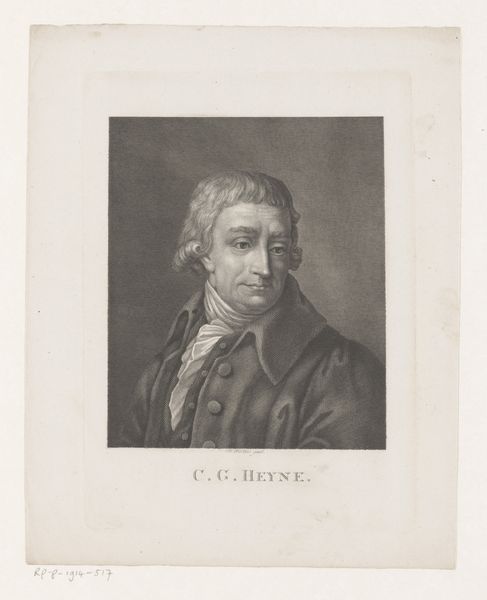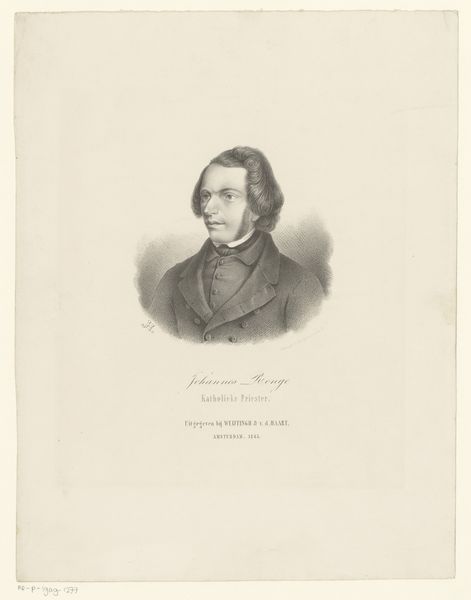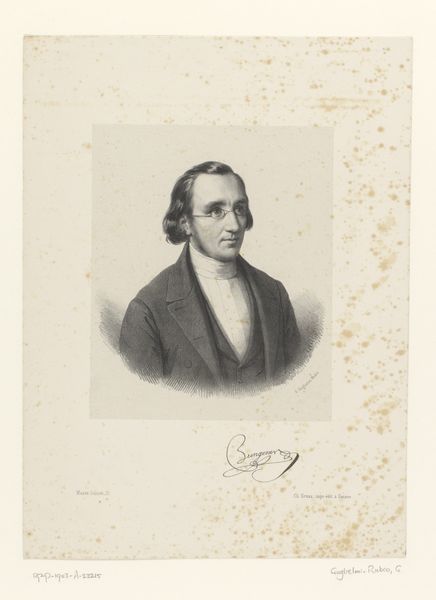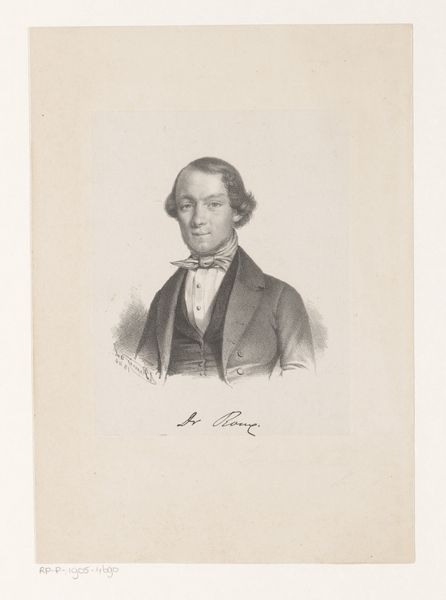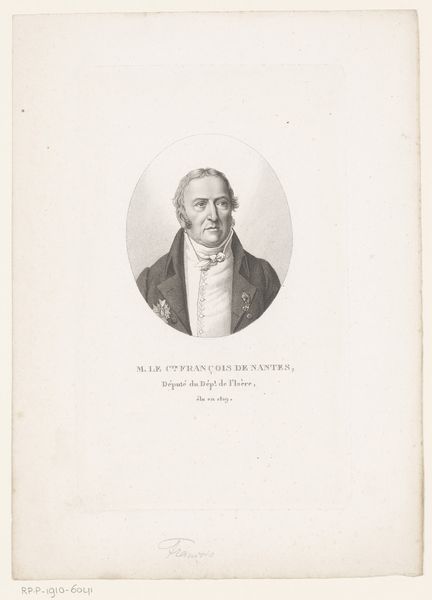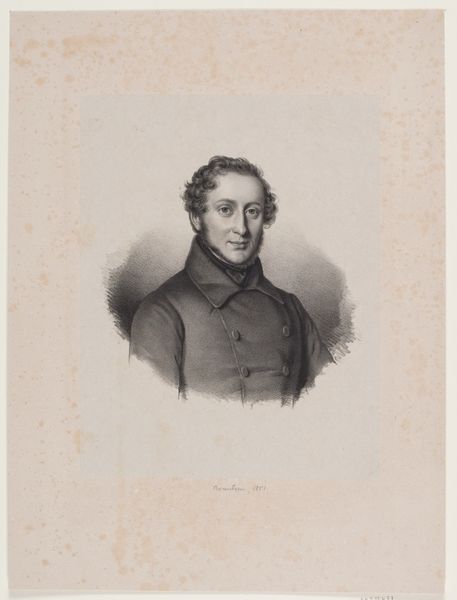
Dimensions: 289 mm (height) x 219 mm (width) (bladmaal)
Curator: Here we have a lithograph simply titled "H. C. Valentiner," created sometime between 1837 and 1874. The print is currently held at the SMK, the Statens Museum for Kunst. Editor: Well, my first impression is one of gentle solemnity. The subject's gaze is direct, but not challenging, more… contemplative, maybe even a little sad? Curator: The interesting thing to consider is the process of lithography itself during this period. Prints like these became a vital means of distributing likenesses, democratizing portraiture beyond the wealthy elite who could afford painted portraits. Think about the skilled labor involved. Editor: Ah, a world without selfies. Imagine! He does look like he might secretly yearn for one though; perhaps he's thinking about whether to loosen that rather severe cravat. I appreciate how much detail the artist coaxed from a seemingly simple medium. The fine lines... Curator: And those lines speak volumes about production and accessibility. Lithography allowed for relatively quick reproduction, which facilitated the rise of illustrated newspapers and journals. The Romanticism you perceive wasn't solely about artistic expression. It was inextricably linked to material realities. The cost of prints affected their availability, which therefore influenced public taste and opinion. Editor: Yes, true, I imagine this would be more economical. I still come back to that expression though. Do you think the artist consciously amplified Valentiner’s melancholy or is this the romantic filter through which all portraits were viewed in that era? Or is it a reflection on class anxiety at the time? Curator: I think, given the rise of the bourgeoisie and their desire for cultural capital, there's an argument to be made that Valentiner— whoever he was—was consciously projecting a certain image. The artistic value of a portrait print had ties to notions of commerce, social aspirations, and, in short, what owning a reproduction suggested. Editor: Ultimately, the work has such character, transcending just historical interest. It encourages me to muse on what drove the hands behind the print to begin with.
Comments
No comments
Be the first to comment and join the conversation on the ultimate creative platform.
